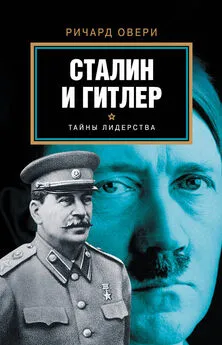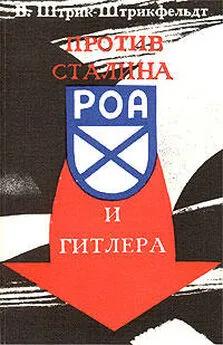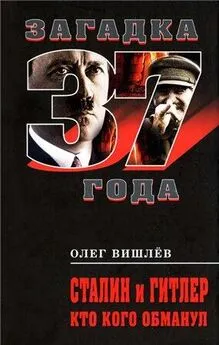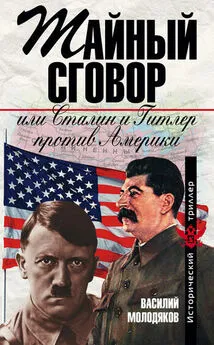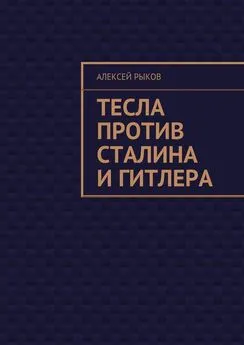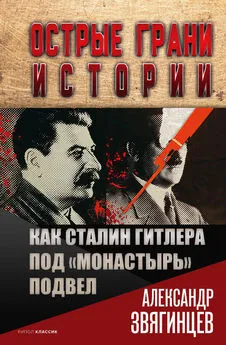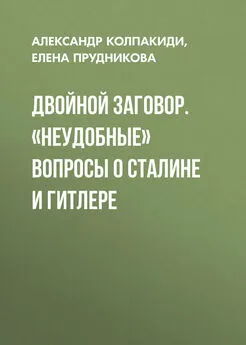Ричард Овери - Сталин и Гитлер
- Название:Сталин и Гитлер
- Автор:
- Жанр:
- Издательство:АСТ
- Год:2015
- Город:Москва
- ISBN:978-5-17-082961-3
- Рейтинг:
- Избранное:Добавить в избранное
-
Отзывы:
-
Ваша оценка:
Ричард Овери - Сталин и Гитлер краткое содержание
Что это были за личности?
Какими были методы их правления?
В чем мораль диктатуры как таковой и к чему она ведет?
На эти и другие наболевшие вопросы отвечает известный британский историк, автор крупных работ по истории Второй мировой войны Ричард Овери.
При сравнение и сопоставление двух режимов Овери рассматривает степень и характер народной поддержки, очаги противостояния и сопротивления, путь к власти каждого из диктаторов и процесс формирования культа личности и т. д.
Сталин и Гитлер - читать онлайн бесплатно полную версию (весь текст целиком)
Интервал:
Закладка:
29. Y. Yevtushenko (ed.) Twentieth-Century Russian Poetry (London, 1993), p. 81; on the use of religious imagery and metaphor see N. Tumarkin Lenin Lives! The Lenin Cult in Soviet Russia (Cambridge, Mass., 1997), pp. 18–23; M. D. Steinberg Proletarian Imagination: Self, Modernity, and the Sacred in Russia, 1910–1925 (Ithaca, NY, 2002), pp. 254–5, 273–8.
30. Tumarkin, Lenin Lives! p. 21; on Lunacharsky see A. L. Tait ‘Lunacharsky: a “Nietzschean Marxist”?’, in Rosenthal, Nietzsche in Russia, pp. 275–92.
31. On the Tsar cult and its decline see O. Figes and B. Kolonitskii Interpreting the Russian Revolution: the Language and Symbols of 1917 (New Haven, Conn., 1999), chs 1–2; Tumarkin, Lenin Lives! pp. 6–12.
32. Pravda, 18 December 1939.
33. W. Laqueur Stalin: the Glasnost Revelations (London, 1990), p. 180.
34. Tumarkin, Lenin Lives! pp. 54–5.
35. I. Bonnell Iconography of Power: Soviet Political Posters under Lenin and Stalin (Berkeley, Calif., 1997), pp. 140–54; S. Davies Popular Opinion in Stalin’s Russia: Terror, Propaganda and Dissent, 1934–1941 (Cambridge, 1997), pp. 147–9.
36. Tumarkin, Lenin Lives! p. 80.
37. Tumarkin, Lenin Lives! p. 82.
38. B. Ennker ‘The Origins and Intentions of the Lenin Cult’, in I. D. Thatcher (ed.) Regime and Society in Twentieth-Century Russia (London, 1999), pp. 119–25; Zbarsky and Hutchinson, Lenin’s Embalmers, pp. 9–25 for details on the decision.
39. Ennker, ‘Lenin Cult’, pp. 123–4; Zbarsky and Hutchinson, Lenin’s Embalmers, pp. 25–31; Tumarkin, Lenin Lives! pp. 191–6, 205.
40. Bonnell, Iconography of Power, pp. 148, 150; Tumarkin, Lenin Lives! pp. 126–7; R. Löhmann Der Stalinmythos: Studien zur Sozialgeschichte des Personenkultes in der Sowjetunion (1929–1935) (Münster, 1990), pp. 47–56.
41. Storr, The Essential Jung, p. 210, The Development of Personality’, 1934.
42. Lewis, Hitler Cult, p. 47.
43. IWM, FO 645/161, interrogation of Christa Schroeder, 13 September 1945, p. 5.
44. See, for example, G. Ueding ‘Rede als Fürherproklamation’ in J. Kopperschmidt (ed.) Hitler der Redner (Munich, 2003), pp. 441–53.
45. M. Dodd My Years in Germany (London, 1939), p. 180.
46. M. Loiperdinger ‘“Sieg des Glaubens” – Ein gelungenes Experiment nationalsozialistischer Filmpropaganda’, in U. Hermann and U. Nassen (eds) Formative Ästhetik in Nationalsozialismus (Weinheim, 1994), pp. 40–45.
47. V. Cowles Looking for Trouble (London, 1941), pp. 153–4.
48. Lewis, Hitler Cult, p. 39.
49. J. H. Billington The Face of Russia (New York, 1998), p. 210.
50. See, for example J. Stalin Problems of Leninism (Moscow, 1947), pp. 250, 285, 439.
51. Resis, Molotov Remembers, pp. 175–6.
52. Hitler’s model was the unmarried mayor of pre-war Vienna, Karl Lueger. See B. Hamann Hitler’s Vienna: a Dictator’s
Apprenticeship (Oxford, 1999), pp. 375–8; See too Public Record Offi ce, Kew, London FO 1031/102 ‘Women around Hitler’, Memorandum by Karl Brandt, 6 February 1946: ‘Hitler wished to keep the mystic legend alive in the hearts of the German people that so long as he remained a bachelor, there was always the chance that any out of the millions of German women might possibly attain the high distinction of being at Hitler’s side.’
53. Speer, Inside the Third Reich, p. 114.
54. E. Barker Refl ections on Government (Oxford, 1942), p. 375.
55. Kolnai, War against the West, p. 153.
56. Kolnai, War against the West, pp. 156, 158.
57. Stalin, Foundations, pp. 109–10.
58. Bonnell, Iconography of Power, pp. 157–9.
59. Tumarkin, Lenin Lives! pp, 252–3; Rosenthal, New Myth, New World, pp. 375, 379; S. Davis The Leader Cult: Propaganda and its Reception in Stalin’s Russia’, in J. Channon (ed.) Politics, Society and Stalinism in the USSR (London, 1998), pp. 117–18.
60. Labin, Stalin’s Russia, p. 71; see too van Ree, Political Thought of Joseph Stalin, p. 162.
61. Bonnell, Iconography of Power, pp. 162–4; Labin, Stalin’s Russia, p. 67.
62. van Ree, Political Thought of Joseph Stalin, p. 165.
63. C. Schmölders Hitlers Gesicht: Eine physiognomische Biographie (Munich, 2000), p. 145.
64. Schmölders, Hitlers Gesicht, pp. 39–40; on the presentation of the image see too U. Kühn ‘Rede als Selbstinszenierung – Hitler auf der “Bühne”’, in Kopperschmidt, Hitler der Redner, pp. 368–79; K. Protte ‘Hitler als Redner in Fotografi e und Film’, in Kopperschmidt, Hitler der Redner, pp. 243–54.
65. Schmölders, Hitlers Gesicht, p. 104.
66. Schmölders, Hitlers Gesicht, pp. 148–9; see too C. Koonz The Nazi Conscience (Cambridge, Mass., 2003), pp. 77–9.
67. Bonnell, Iconography of Power, p. 137.
68. Bonnell, Iconography of Power, p. 157.
69. Rosenthal, New Myth, New World, pp. 380, 386.
70. Löhmann, Der Stalinmythos, p. 27.
71. G. F. Alexandrov et al. Joseph Stalin: a Short Biography (Mocow, 1949); see too van Ree, Political Thought of Joseph Stalin, pp. 162–5.
72. J. J. Barnes and P. P. Barnes Hitler’s Mein Kampf: Britain and America: a Publishing History 1930–39 (Cambridge, 1980), pp. 1–2; see too W. Maser Mein Kampf: Der Fahrplan eines Welteroberers: Geschichte, Auszüge, Kommentare (Esslingen,
1974) and, more recently, B. Zehnpfennig Hitler’s Mein Kampf: Eine Interpretation (Munich, 2000).
73. Laqueur, Glasnost Revelations, p. 182.
74. History of the Communist Party of the Soviet Union: short course (Moscow, 1942), p. 206.
75. Fenander, ‘Author and Autocrat’, p. 297.
76. Fenander, ‘Author and Autocrat’, p. 297.
77. Davies, Popular Opinion in Stalin’s Russia, p. 149.
78. Labin, Stalin’s Russia, p. 68.
79. H. G. Baynes Germany Possessed (London, 1941), pp. 107–8.
80. Schmölders, Hitlers Gesicht, p. 145.
81. Bonnell, Iconography of Power, pp. 148, 166.
82. Labin, Stalin’s Russia, pp. 64–5.
83. Davies, Popular Opinion in Stalin’s Russia, p. 161.
84. F. J. Miller Folklore for Stalin: Russian Folklore and Pseudofolklore of the Stalin Era (New York, 1990), ch. 2.
85. Miller, Folklore for Stalin, p. 69; F. J. Miller The Image of Stalin in Soviet Russian Folklore’, Russian Review, 39 (1980), pp. 57–8.
86. Miller, Folklore for Stalin, p. 143.
87. Baynes, Germany Possessed, p. 107.
88. R. Marsh Images of Dictatorship: Stalin in Literature (London, 1989), p. 31.
89. Marsh, Images of Dictatorship, p. 39.
90. Marsh, Images of Dictatorship, p. 27.
91. Labin, Stalin’s Russia, p. 65.
92. Davies, Popular Opinion in Stalin’s Russia, p. 165; Laqueur, Glasnost Revelations, p. 183.
93. Davies, Popular Opinion in Stalin’s Russia, p. 174.
94. G. Neesse Die NSDAP: versuch einer Rechtsdentung (Stuttgart, 1935), pp. 196–7; see too H. Brausse Die Führungsordnung des deutschen Volkes: Grundlegung einer Führungslehre (Hamburg, 1940) pp. 14–25, 52–5.
95. Storr, Essential Jung, p. 201.
96. M. Perrie ‘Nationalism and History: the Cult of Ivan the Terrible in Stalin’s Russia’, in G. Hosking and R. Service (eds) Russian Nationalism: Past and Present (London, 1998), p. 120.
97. Joseph Stalin: a Short Biography, pp. 201–3.
98. Kolnai, War against the West, p. 20.
99. Davies, Popular Opinion in Stalin’s Russia, p. 172.
100. Kershaw, The ‘Hitler Myth’, p. 60.
101. In general on the cult see Kershaw, The ‘Hitler Myth’; G. Gill ‘The Soviet Leader Cult: Refl ections on the Structure of Leadership in the Soviet Union’, British Journal of Political Science, 10 (1980), pp. 167–86; R. H. Tucker The Rise of Stalin’s Personality Cult’, American Historical Review, 84 (1979), pp. 347–66; S. Davies, ‘The Leader Cult: Propaganda and its Perception in Stalinist Russia’, in J. Channon (ed.) Politics, Society and Stalinism in the USSR (London, 1988), pp. 115–38.
102. Davies, Popular Opinion in Stalin’s Russia, p. 170.
103. Davies, Popular Opinion in Stalin’s Russia, p. 174.
104. N. Mandelstam Hope against Hope (London, 1970), p. 203; see too Marsh, Images of Dictatorship, pp. 36–8.
105. Marsh, Images of Dictatorship, pp. 45–50.
106. J. Brooks Thank you, Comrade Stalin: Soviet Public Culture from Revolution to Cold War (Princeton, 2000), p. 60.
107. G. Prokhorov Art under Socialist Realism: Soviet Painting 1930–1950 (Roseville East, Austr., 1995), p. 101.
108. IWM, Speer Collection, Box S369, FIAT Report 19, exploitation of Albert Speer, 19 October 1945, pp. 3–4
109. C. Haste Nazi Women (London, 2001), p. 78.
110. F. Reck-Malleczewen Diary of a Man in Despair (London, 1951), p. 19.
111. Resis, Molotov Remembers, pp. 189–90; on Hitler’s retirement, IWM, Speer Collection, Box S369, FIAT Report 19, p. 15.
112. Löhmann, Der Stalinmythos, p. 6.
113. Marsh, Images of Dictatorship, p. 28.
114. Fenander, ‘Author and Autocrat’, p. 295.
Глава 4
1. J. Öhquist Das Reich des Führers (Bonn, 1943), p. 161.
2. J. Stalin Works (13 vols, Moscow, 1953–55), vol. viii, p. 43, ‘Concerning Questions of Leninism’, January 1926.
3. ‘Der Schlussrede des Führers auf dem Parteikongress’ 10 September 1934, in G. Neesse Die Nationalsozialistische Deutsche Arbeiterpartei (Stuttgart, 1935), pp. 194–6.
4. J. Stalin Problems of Leninism (Moscow, 1947), pp. 80–81, ‘Foundation of Leninism’, April 1924.
5. Stalin, Problems of Leninism, pp. 81–2.; Neese, Nationalsozialistische Partei, pp. 196–7; D. Hein ‘Partei und Bewegung. Zwei Typen moderner politischer Willensbildung’, Historische Zeitschrift, 263 (1996), pp. 85–7, 90–91.
6. Neesse, Nationalsozialistische Partei, p. 202; Stalin, Problems of Leninism, p. 80.
7. Neesse, Nationalsozialistische Partei, p. 202; Stalin, Problems of Leninism, p. 139, ‘On the Problems of Leninism’, 26 January 1926; H. Mehringer Die NSDAP als politische Aus lese organisation (Munich, 1938), p. 14.
8. Stalin, Problems of Leninism, p. 84; Neesse, Nationalsozialistische Partei, p. 202; L. Münz Führer durch die Behörden und Organisationen (Berlin, 1939), p. 2a.
9. Stalin, Problems of Leninism, p. 153; Works, vol. viii, p. 43.
10. Stalin, Problems of Leninism, p. 82; Stalin, Works, vol. viii, pp. 44–5.
11. Neesse, Nationalsozialistische Partei, p. 22; Mehringer, Die NSDAP, p. 14; W. Schieder ‘Die NSDAP vor 1933. Profi l einer faschistischen Partei’, Geschichte und Gesellschaft, 19 (1993), pp. 145–7; J. Caplan ‘National Socialism and the Theory of the State’, in T. Childers and J. Caplan (eds) Reevaluating the Third Reich (New York, 1993), pp. 105–7.
12. T. H. Rigby Communist Party Membership in the USSR 1917–1967 (Princeton, NJ, 1968), p. 52; M. Kater The Nazi Party: A
Social Profi le of Members and Leaders, 1919–1945 (Oxford, 1983), p. 263; B. Meissner The Communist Party of the Soviet Union (New York, 1956), pp. 4–5.
13. A. Avtorkhanov The Communist Party Apparatus (Chicago, 1961), pp. 76, 79–80; M. Fainsod How Russia is Ruled (Cambridge, Mass., 1967), pp. 248–50, 262; G. Gill The Rules of the Communist Party of the Soviet Union (London, 1988), pp. 40–42.
14. R. Taylor Film Propaganda in Soviet Russia and Nazi Germany (London, 1998), p. 63.
15. Meissner, Communist Party, p. 40; Gill, Rules of the Communist Party, pp. 163–4.
16. C.-W. Reibel Das Fundament der Diktatur: Die NSDAP-Ortsgruppen 1932–1945 (Paderborn, 2002), pp. 232–3.
17. Details on membership from Rigby, Communist Party Membership, pp. 190–91, 197–200, 256–63; see too Fainsod, How Russia is Ruled, pp. 248–70.
Читать дальшеИнтервал:
Закладка:
